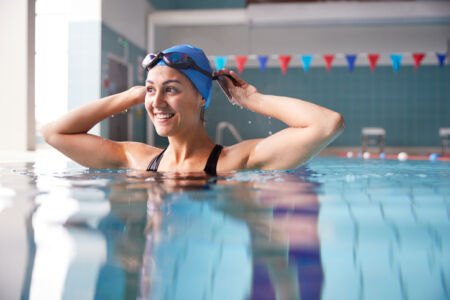
You may have heard that exercise is beneficial to preventing and managing unsightly varicose veins, but do you know which exercise is the best? While there are a number of positive options, the one that is most recommended by vein specialists is swimming. This low-impact aerobic activity benefits the veins – and the rest of your body – in a myriad of ways.
The Dual Role of Water Exercise
Working out in the water offers a dual benefit for varicose vein sufferers. First, swimming lessens the effect of gravity on the lower leg veins, which relieves the pressure on the vessels. Swimming also improves circulation in the legs, as the slight pressure of the water works the muscles so they can help the veins push blood back to the heart more efficiently. Swimming is also one of the few workouts that utilizes all of your muscle groups at one time, which improves your overall circulation even better than most other types of exercise.
Other Benefits of Swimming
In addition to benefiting your lower leg veins, swimming offers a variety of benefits for your entire body:
• Low-impact workout means lower risk for injuries
• Improves flexibility and mobility of stiff joints
• Aerobic activity improves oxygen use for healthier lungs and heart
• Works both the upper body and lower body at the same time
• Builds strength while toning the body
In addition to relieving the painful symptoms of varicose veins, regular swim workouts may even shrink swollen vessels that have already appeared. If you have not developed any varicose veins yet, swimming may help to keep those swollen veins at bay.
Tips for Beginning a Swimming Program
If swimming hasn’t been a part of your workout program, it is best to start slow with your water regimen. Some people find that simply treading water is a good way to get used to the water again and build up some basic muscle strength for more intense workouts. You can also use a kick-board for your laps to give your arms a break while you continue to work your legs. If swimming is not your thing, you can also benefit from basic water exercises like leg lifts, pedaling in place and kicking from the side of the pool.
Swimming is an excellent way to manage varicose veins that have already occurred, but the exercise will not reverse those swollen vessels completely. At Center for Vein Restoration, we offer minimally-invasive treatments that effectively eliminate varicose veins and their uncomfortable symptoms. To learn more, contact our office today.